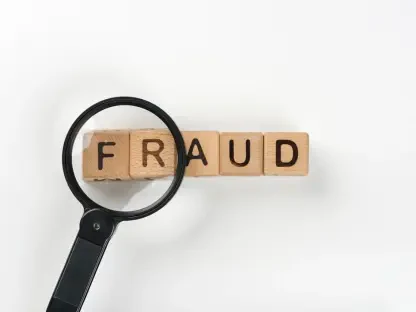Amidst a cloud of past corruption and evolving energy policies, Ohio is on the brink of a significant legislative shift. Lawmakers are working to end customer-financed subsidies for two aging coal-fired power plants, a move that has garnered rare bipartisan support. The lingering scandal associated with these subsidies has prompted a thorough reevaluation of Ohio’s energy policy.
Bipartisan Legislative Effort
Unprecedented Cooperation
A noteworthy aspect of this initiative is the overwhelming bipartisan consensus. Both the House and Senate have rallied behind the proposed legislation—House Bill 15 and Senate Bill 2—demonstrating a unified front in rectifying past missteps. This cooperative spirit marks a significant departure from the usual partisan divides in legislative processes. By uniting against the remnants of the scandal, legislators aim to restore not only public trust but also the integrity of Ohio’s energy sector. The rare show of unity underscores the importance placed on addressing the ethical lapses of the past while forging a transparent path forward.
The collaboration between lawmakers from different political backgrounds is driven by a common goal: to dismantle the financial mechanisms that sustained the tarnished subsidies. This legislation emerges as a beacon of systematic reform, suggesting a significant pivot from the corruption that tainted Ohio’s energy policies. By implementing these bills, state officials hope to send a clear message of zero tolerance for corruption, creating a foundation for future energy initiatives premised on accountability and transparency. Such bipartisan cooperation sets a precedent, making it more challenging for future unethical practices to take root.
Legislative Momentum
The momentum gained by these bills is indicative of the legislative drive to excise remnants of the corruption scandal. Five years after the nuclear bailout scandal rocked the state, terminating the coal plant subsidies symbolizes a crucial step toward restoring public trust and ensuring ethical governance. The determination to rectify the situation reflects lawmakers’ responsiveness to public sentiment, wherein there is a widespread desire for the state to move past its tarnished recent history.
As these bills progress through legislative channels, they embody a concerted effort toward ethical governance, aiming to sever ties with past misdeeds. The determination to dismantle these subsidies further exemplifies dedication to resetting Ohio’s energy policies on a righteous path. Lawmakers are keenly aware that this decision is not merely about financial adjustments but also about reaffirming their commitment to transparent and just governance. By putting an end to the subsidies, they articulate a broader intent to elevate legislative standards and ensure that future policies are forged with integrity.
Financial Burden on Customers
Monthly Bill Impact
The subsidies currently impose an additional $1.50 charge on residential utility customers’ monthly bills. This seemingly small amount has accumulated over the years, resulting in over $500 million in costs borne by Ohio electricity consumers. The financial burden of these added costs has been a persistent issue, quietly escalating over time and placing an undue strain on households. This accrual of expenses highlights the far-reaching implications of policies rooted in corruption, as residents have continued to bear the brunt of these additional charges month after month.
Lawmakers are acutely aware of the public’s increasing frustration over this ongoing financial drain. The necessity to halt these subsidies grows as residents demand more transparency and fairness in their utility billing. Addressing this issue is not only a matter of economic relief but also of repairing the trust between the state and its citizens. The push to remove the charges illustrates a commitment to prioritizing the welfare of Ohio’s residents, ensuring they are no longer encumbered by costs linked to the previous administration’s malfeasance.
Broad Financial Consequences
The ongoing financial impact has fueled the urgency to abolish these payments. Lawmakers argue that these unnecessary costs are a direct result of the corruption scandal, emphasizing the need to bring financial relief to residents and remove the tainted legacy from the state’s energy policies. By eliminating the subsidies, legislators intend to sever financial ties to a tainted past, thereby unburdening the current consumer from the repercussions of outdated and unethical agreements.
The decision to eliminate these subsidies also holds broader economic implications, shedding light on the immediate and long-term benefits for the state’s economy. Redirecting the funds currently used to cover these charges could stimulate other sectors, fostering investment in more sustainable and transparent energy initiatives. This shift would not only alleviate the residents’ financial strain but also promote a healthier economic environment, untainted by scandal and corruption. In this context, the legislative move transcends mere policy adjustment, signifying a larger effort to purify Ohio’s economic framework from the shadows of past improprieties.
Opposition from Utilities
Utility Pushback
Major utilities, such as American Electric Power (AEP), which is the largest shareholder in the Ohio Valley Electric Corp (OVEC), stand firmly opposed to the bills. Their resistance is rooted in economic concerns, reflecting the potential impact on their operations and revenue streams if the subsidies are repealed. The termination of these subsidies raises substantial concerns for utility companies that have grown accustomed to these financial supports, with potential ramifications extending to their financial planning and long-term investment strategies.
The opposition from utilities underscores the complex interplay between ethical governance and economic stability. Utility providers argue that an abrupt policy change could disrupt their financial equilibrium, potentially leading to higher operational costs and reduced profitability. These concerns highlight the challenge legislators face in balancing the long-term ethical goals with the immediate financial interests of significant economic players. The debate brings to light the intricate connections within the energy sector, where policy decisions ripple through various aspects of operation and finance.
Economic and Community Concerns
Local communities reliant on the coal plants for employment express worry over potential job losses. The fear of economic fallout in southern Ohio is a significant counterpoint to the legislative push, raising questions about balancing ethical considerations with economic stability. The potential disappearance of subsidies poses a direct threat to local economies, where the coal plants serve as major employment hubs, and sudden changes could lead to job cuts and economic distress.
In these affected communities, residents and local leaders voice concerns over how to transition away from reliance on the coal industry without triggering economic instability. The potential job losses loom large, reflecting the broader socioeconomic implications of the legislative decision. Addressing these concerns requires careful consideration of transitional strategies that can mitigate the direct impact on those most vulnerable to the economic shifts. Thus, lawmakers find themselves in a delicate balancing act, weighing the ethical imperative of cutting ties with the scandal against the tangible economic realities faced by their constituents.
Legislative Provisions
Taxation and Regulation Changes
The proposed bills include substantial changes to utility taxation and rate-making. One of the critical provisions is the reduction of tangible personal property tax for new electricity generation equipment from 25% to 7%, intending to spur investment and modernization within the sector. This significant tax reduction represents an effort to incentivize the adoption of newer, more efficient technology and infrastructure in the energy sector. Lawmakers hope that the lower tax rate will encourage utility companies to invest in more sustainable and advanced equipment, contributing to the modernization of Ohio’s energy infrastructure.
Additionally, the restructuring of tax policies is designed to attract investment and bolster the state’s economic competitiveness. By making the energy sector more financially appealing, lawmakers aim to stimulate growth and innovation. These changes are part of a broader strategy to create a resilient and forward-thinking energy grid that can meet the evolving demands of the population while phasing out older, less efficient technologies. The proposed tax adjustments highlight a commitment to long-term economic and technological growth, poised to benefit both consumers and businesses in Ohio.
Ownership and Rate Cases
Additional provisions prevent utilities from owning transmission, distribution, and generation facilities, aiming to enhance transparency and competition. The bills also mandate that utilities file new rate cases by 2029 and periodically thereafter to ensure fair pricing structures for consumers. These measures are designed to dismantle monopolistic practices and foster a more competitive marketplace, where various stakeholders can operate on a more level playing field. By separating the ownership of different utility functions, legislators hope to mitigate conflicts of interest and incentivize operational efficiency.
Requiring periodic rate cases ensures that pricing structures remain equitable and reflective of current market conditions. This regulatory oversight seeks to protect consumers from unwarranted price hikes and ensure that utility rates are based on actual costs rather than inflated charges. These reforms are part of a larger framework aimed at fostering a transparent and fair utility sector, where consumer interests are safeguarded, and utility operations are held to stringent ethical and financial standards. Through these legislative provisions, Ohio signals a shift towards a more balanced and just energy landscape.
Diverse Opinions and Rationale
Supporters’ Arguments
Proponents of the legislation argue that the subsidies’ corrupt origins necessitate their elimination. They emphasize dismantling any remaining vestiges of the scandal to move forward with a clean regulatory slate, ultimately benefiting Ohio’s residents and restoring credibility to the state’s energy policies. Supporters advocate for a decisive break from the past, viewing these reforms as essential steps to rebuild public trust and maintain ethical governance.
These advocates highlight the moral imperative of addressing corruption head-on and removing any tainted elements from current policies. By eliminating the subsidies, they argue, the state takes a firm stance against unethical practices and sets a precedent for future governance. This approach underlines a commitment to transparency and accountability, which are crucial for the healthy functioning of public institutions. Lawmakers pushing for the repeal view it as a necessary corrective measure, one that will pave the way for more robust and ethical policy-making in the future.
Opponents’ Counterarguments
Conversely, some legislators advocate for a more nuanced approach rather than an immediate repeal. They highlight the commitments made to local communities and the potential unfairness of a sudden policy change, suggesting a phased reduction to mitigate economic disruptions. Opponents argue that a gradual decrease in subsidies would allow affected areas to adapt more effectively, minimizing the economic shock and providing time to develop alternative employment opportunities and economic supports.
This perspective underscores the importance of balancing ethical considerations with practical economic realities. By proposing a phased approach, opponents seek to honor previous commitments and afford communities the time to adjust to new economic conditions. This measured strategy aims to preserve economic stability while still moving towards the ultimate goal of eliminating corruption-related subsidies. The debate thus revolves around finding an equilibrium between immediate ethical rectification and gradual economic transition, reflecting the nuanced complexities inherent in policymaking.
Future of Renewable Energy
Mandates and Credits
The current legislative push does not aim to reinstate mandates for renewable energy or efficiency. Instead, the focus is on ending the remaining credits and refunding uncommitted funds, signaling a shift away from comprehensive renewable energy support in favor of other regulatory reforms. This represents a strategic decision to prioritize the rectification of past issues and the establishment of a more transparent regulatory landscape over the immediate expansion of renewable energy mandates.
The decision to forgo reinstating renewable energy mandates reflects a calculated shift in priority. While renewable energy remains a critical component of long-term energy policy, lawmakers are opting to address foundational regulatory reforms first. By doing so, they aim to create a more ethical and efficient policy environment, thus setting the stage for more sustainable and well-regulated renewable energy initiatives in the future. The current legislation, therefore, emphasizes the importance of foundational reforms as a precursor to broader energy policy advancements.
Policy Direction
Reflecting Ohio’s broader energy strategy, the legislation prioritizes ensuring adequate power supply to support industrial growth. This approach underscores a balance between fostering business development and addressing past policy failures, striving to secure a sustainable energy future amidst growing industrial demands. The focus on reliable power supply aims to attract and support industrial entities, including data centers and manufacturing facilities, which are critical to the state’s economic expansion.
By emphasizing energy reliability and regulatory reform, Ohio aims to position itself as a competitive and stable environment for business growth. The legislation’s direction indicates a pragmatic approach, aligning energy policies with broader economic goals while working to rectify previous administrative shortcomings. This dual focus balances the immediate needs of industrial development with the long-term vision of a transparent and ethically governed energy sector, paving the way for a more secure and prosperous future for the state.
Conclusion
Ohio is on the verge of a major legislative transformation, as state lawmakers push to eliminate customer-financed subsidies for two aging coal-fired power plants. This initiative has received rare bipartisan backing, marking a significant shift in energy policy. The drive to end these subsidies stems from a lingering corruption scandal tied to them, which has led to a comprehensive reassessment of the state’s energy strategies. Amidst the backdrop of evolving energy policies, this movement aims to address past corruption and pave the way for cleaner, more sustainable energy practices. The legislative change reflects a growing consensus among Ohio’s lawmakers about the need for reform in light of both ethical concerns and the push for renewable energy sources. This critical shift not only addresses past issues but also aligns with the broader trend toward sustainable energy, potentially setting a precedent for other states to follow.









